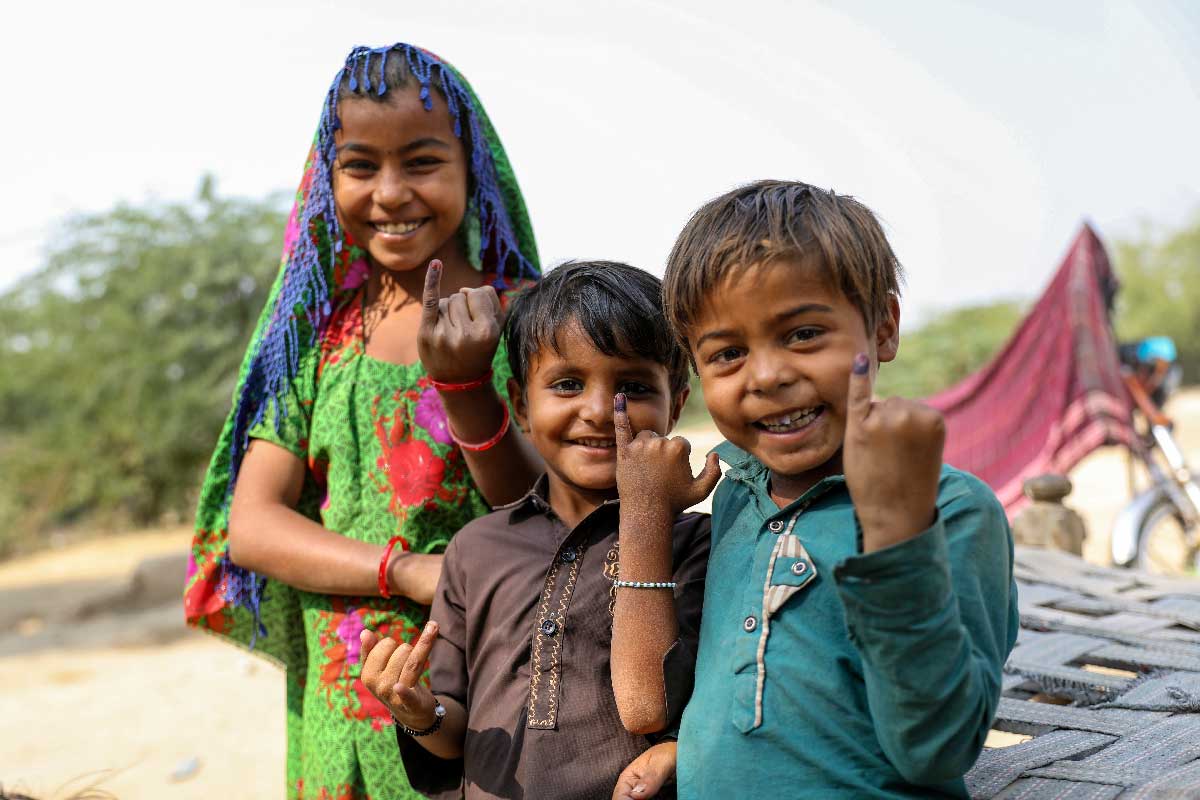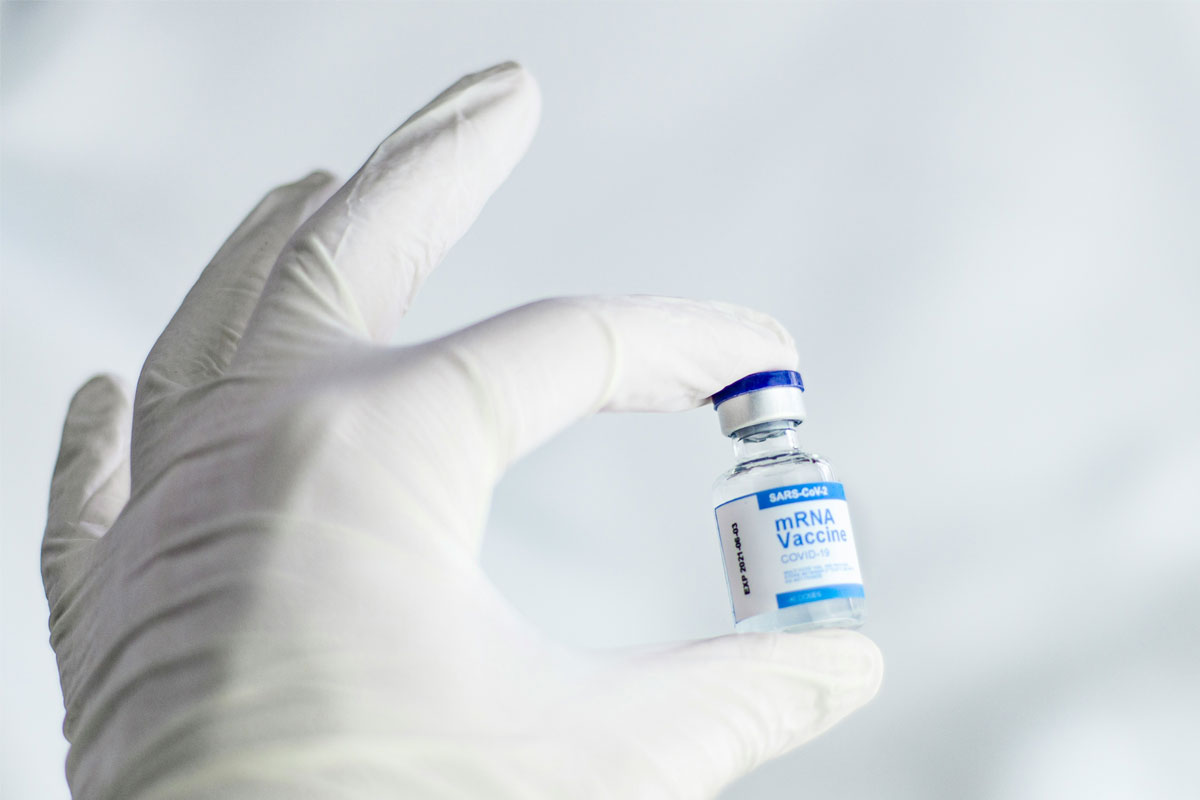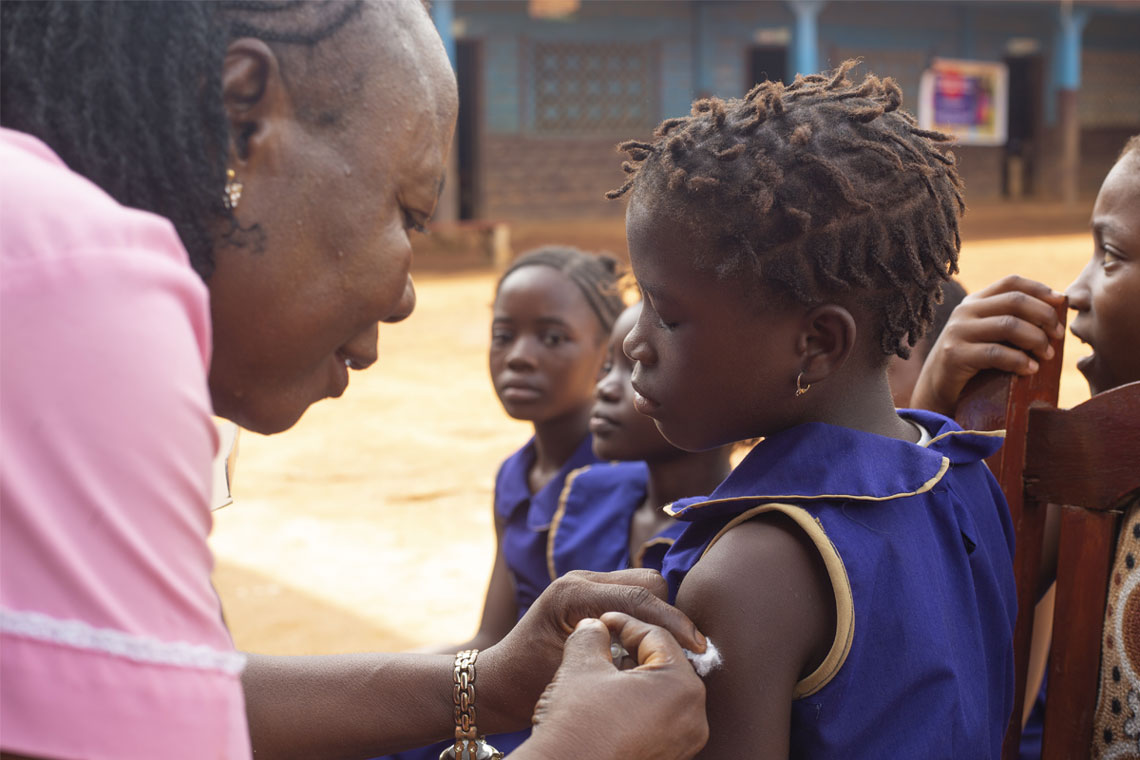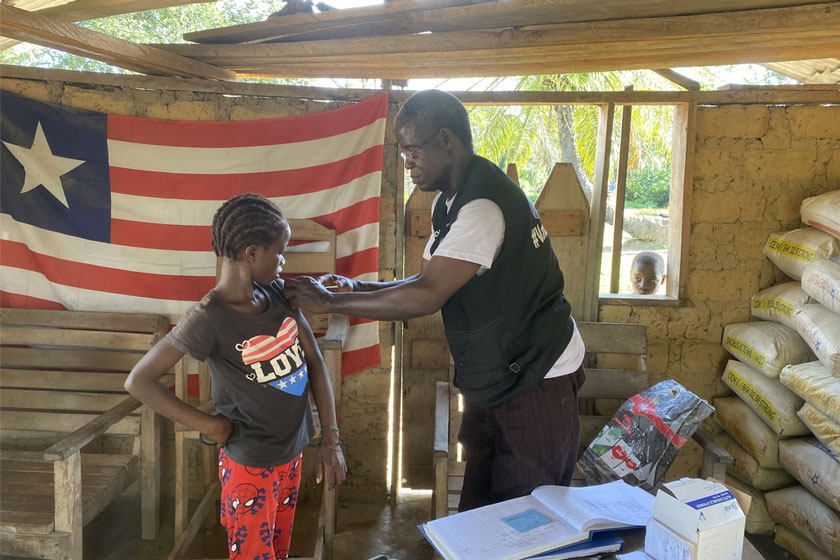How vaccines could help lift millions out of poverty
Modelling across 52 low-income countries suggests that vaccines don’t just save lives – they protect livelihoods, shielding households against catastrophic health costs.
- 10 November 2025
- 5 min read
- by Linda Geddes

In many parts of the world, when a family member falls seriously ill, the impact isn’t just measured in pain and worry – it can tip a household into financial crisis. The cost of a single hospital visit may force families to sell livestock or pull children out of school. Lost earnings – from the illness itself, or time spent caring for a loved one – only deepen the blow. However, a new study suggests that vaccines could act as a crucial buffer, protecting families from the kind of financial shock that can unravel lives.
“It shows that vaccines can serve as protection against the possible financial consequences of getting severely unwell,” said Tewodaj Mengistu, a study co-author and senior programme officer in Gavi’s Measurement Evaluation and Learning team.
How does sickness fuel poverty?
Eradicating extreme poverty is one of the world’s big ambitions – but it’s not just about growing economies. For millions of families, the threat isn’t just lack of income, but the sudden loss of it. In 2019, more than a third of health expenses were paid out of individuals’ own pockets, according to the World Health Organization (WHO).
When people fall ill and need hospital care, the costs add up – not just for treatment, but for transport to the hospital and lost wages. “For families on low incomes, this can trigger a catastrophic financial situation,” Mengistu said.
Because poor and disadvantaged communities are more likely to fall ill in the first place, this only deepens the connection between sickness and poverty.
Before the COVID-19 pandemic, research had already suggested that vaccines could help shield families from these so-called ‘catastrophic health expenditures’ – costs so high they can push households into poverty. But since then, more people have slipped into poverty and vaccination rates have fallen, making it vital to reassess just how big a role vaccines can play in protecting livelihoods.
To investigate, an international team led by Stéphane Verguet at Harvard T.H. Chan School of Public Health in Boston, US, examined the impact of Gavi-supported vaccines – those protecting against hepatitis B, Haemophilus influenzae type B (Hib), rotavirus, measles and Streptococcus pneumoniae (pneumococcus) – across 52 Gavi-eligible countries. Instead of just counting lives saved, they asked a different question: how many catastrophic health expenditures did vaccines prevent?
Using advanced modelling, along with historical and projected vaccination coverage data disease burden estimates from 2000 to 2030, as well as consumption data, health expenditure and healthcare utilisation data, the researchers simulated how much people spend on health across 52 low- and middle-income countries under various immunisation coverage scenarios. They estimated who received vaccines, who was likely to have fallen ill without that protection, and how much their families would have had to spend because of someone getting sick.
How can vaccines help protect livelihoods?
The study, published in PLOS Medicine, found that vaccines prevented around 100 million cases of catastrophic health expenditure in these countries between 2000 and 2021, and are projected to prevent a further 100 million cases between 2022 and 2030 – around 200 million cases in total. That's the equivalent of averting more than 6.6 million financially devastating health shocks each year, on average.
Strikingly, about half of those spared from financial disaster came from the very poorest 20% of society, suggesting that vaccines could also help to reduce financial inequality by shielding the poorest from health and medical costs they can least afford.
“It shows that investment in vaccines has benefits beyond averting deaths and sickness; it can also protect households from financial stress,” Mengistu said. “From an equity perspective, it also shows that vaccines have the potential to help the poorest households avoid financial hardship caused by healthcare costs. In some cases, they can prevent families from falling into poverty just because someone got sick.”
Have you read?
Which vaccines have the greatest economic impact?
The study also ranked vaccines according to the greatest impact they were estimated to have on households’ finances.
A first dose of measles-containing vaccine took first place, averting around 1,400 catastrophic health expenditure cases per 10,000 vaccinated children among the poorest 20% – the highest impact of any vaccine studied.
“Although the treatment costs of measles are relatively low, the measles vaccine still prevents many cases of catastrophic health spending by stopping a large number of infections,” said Mengistu. “For a poor household, that amount of money is going to be a larger percentage of their income and therefore lead them to potentially a catastrophic health expenditure by paying that amount.
“However, for a richer household, it's a small amount, so they may not feel that pain in the same way. At the same time, vaccines like hepB have a strong impact across all income levels due to high treatment costs.”
Rotavirus and pentavalent vaccines (which include protection against hepatitis B and Hib) also ranked highly – particularly for lower-income families – while pneumococcal vaccine (PCV3) tended to offer greater financial benefits among wealthier groups.
Mengistu said this kind of analysis could offer an additional dimension to help policymakers prioritise vaccines that offer the best value. “Policymakers often prioritise vaccines based on how many lives they save or illnesses they prevent,” she explained.
“This analysis opens the door to considering another important factor: who benefits. By adding an equity perspective, we can better understand how vaccines not only improve health outcomes but also offer financial protection to those most at risk. It’s a way to broaden the conversation and explore how vaccination can support both health and economic resilience.”








